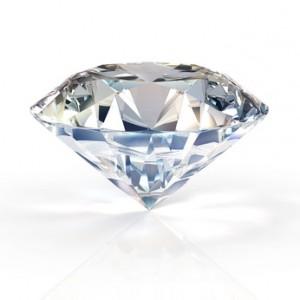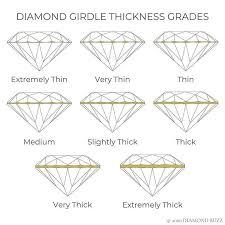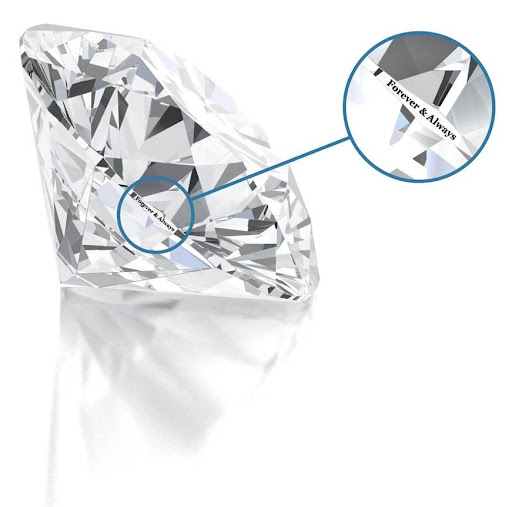Despite the fact that all diamonds are composed of compressed carbon, each one is distinct and different. Diamonds are available in a broad range of forms, sizes, hues, and internal and exterior features that help to identify them. All polished diamonds are precious in some way, but how does one know which one is more valuable than the other?
The value of a diamond is determined by a variety of variables. To settle disagreements regarding a diamond's value, diamond industry specialists employ a set of specific standards that aid in determining a diamond's exact quality and attractiveness. The Gemological Institute of America created these standards, known as the 4 Cs, as the foundation for determining diamond value. They are as follows: Carat, Color, Clarity, and Cut
Aside from the 4 Cs, there are a few additional criteria that help us figure out how much a diamond is worth. These aren't the most important elements, but they certainly have an impact.

The culet is a diamond's bottom point. The culet, which is usually somewhat flat or faceted, impacts a diamond's light performance. The size and angle of a diamond's culet are two important characteristics that might influence its value. The ideal culet should be located in the precise middle of the diamond's bottom and be modest in size. The diamond is harmed by both angle deviation and size growth. Large culets were found in most diamonds centuries ago. The Old Mine cut, for example, has a big culet and was popular throughout the Georgian and Victorian eras. The Old European cut, another earlier cut, also has a large, visible culet. Large culets are no longer considered attractive in diamonds. Because the culet is parallel to the diamond's table, it creates an extra facet at the diamond's tip through which light can escape, reducing the diamond's brightness. When grading a diamond, a gemologist will consider various aspects, including culet. Diamonds with a tiny culet or no culet at all are often considered to have a better cut than diamonds with a large, visible culet. Because the culet of a diamond is so tiny, a gemologist would usually grade it under 10x magnification.

The thickness of the girdle, or the edge that forms where the diamond's top (crown) and bottom (pavilion) meet, might have a detrimental impact on the diamond's value. The girdle's thickness will affect the diamond's symmetry, which is important for light performance. To begin with, the optimum girdle thickness should not be too thin, since this would increase the danger of chipping. The girdle thickness, on the other hand, should not be excessively thick because this will result in "dead weight," which would make the diamond look smaller. Extreme girdle thickness fluctuations (e.g., very thin - very thick) should also be avoided, since they generally signal symmetry difficulties and poor cut. Extreme fluctuations might cause issues throughout the setup procedure, in addition to poorer optical performance. The facets junctions of the crown and pavilion facets meet to produce a knife edge if the girdle thickness is exceedingly thin. From a mechanical standpoint, the diamond's crystalline structure is most vulnerable at knife edges, making them extremely vulnerable to damage. The girdle's polish can also give the diamond an unattractive look. If a bruted girdle is thick enough, it might create an ugly gray reflection to emerge under the table facet, for example.

The impact of laser inscriptions on the value of a diamond has sparked a lot of debate. The laser inscription leaves microscopic indentations on the diamond's surface, marring it with flaws. As a result, it should have an impact on the diamond's clarity and, as a result, its total value. Ironically, because most certifying companies engrave the diamonds, they have the power to eliminate them from the grading process entirely. Diamond laser inscription involves delicately etching numbers, characters, and even pictures on the girdle of the diamond with a very tiny and accurate laser beam. The laser engraving is seen using a jeweler's loupe but is not visible to the human eye and has no effect on the diamond's quality or light performance. Diamond inscriptions have a price tag attached to them. Most customers consider it an essential value add in today's market, and others consider it an anticipated element of diamond certificates.
Sell your diamonds with ease with Diamond Registry’s comprehensive approach and vast global industry connections to help you find the best buyer for your diamond fast. Visit www.diamondregistry.com/sell-your-ring to take your first step to fast, easy and reliable way of selling your diamond.
Want to check and calculate diamond per carat instantly? Go to DR’s diamond price calculator www.diamondregistry.com/diamond-price-list/#calc-move-to to know how. Reliable and trusted carat calculator in the diamond industry since!

